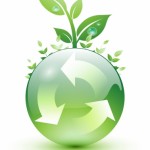Denmark is truckloads of waste ahead of New Zealand when it comes to recycling.
Denmark is truckloads of waste ahead of New Zealand when it comes to recycling.
When you visit a typical recycling depot in Denmark it can be difficult to know where to back in the trailer.
After all there’s the not just the sections for paper or glass, but rows of options like for gib-board, electronic equipment and fridges.

From toilet pans to tyres Denmark has got New Zealand beaten when it comes to recycling, having a staggering 3400 depots.
And the opportunities to offload and feel good and green are keenly taken up by its people.
Only six percent of denmark’s waste now goes to landfill,
Even tricky items like refrigerators can be completely recycled.
Jorgen Damgaard, a director of ARP Scandinavia, leads visitors around his factory at Arhus where retail and residential fridges are taken apart.
The demand for the service came after the Danish government 17 years ago offered 20 percent subsidies to households to get rid of old fridges for less energy demanding models, creating a glut of discarded fridges.
The fridges are de-gassed with the freon , which creates a cooling liquid, treated on site.
They are then shredded, and the iron sent off to Germany and plastic to China.
“In Denmark our legislation says you are not allowed to export anything that can’t be recycled.”
In the Arhus district (population 300,000) two thirds of household waste is recycled and the remaining third burned in a huge incinerator to be converted into heat and electricity.
A large recycling operation adjacent to the incinerator targets construction waste, processing 200,000 tonnes each year.
Hanne Rasmussen, from the waste process plant, says much of the building waste ends up used in road construction.
Up to 40,000 tonnes of garden waste is also processed with the resulting compost sold off in trailer loads, she adds.
Rasmussen says the Arhus incinerator can convert close to 31 tons of refuse into heat and electricity every hour, and last year the plant burned 230,000 tonnes of waste which provided heat for 30,000 houses.
Denmark obtains 17 percent of its energy from waste, and while New Zealanders remain squeamish about potential pollution and the carbon output from burning it has offered a way of substantially cutting back on on the number of landfills.
Some small scale incinerators in Denmark also burn ‘wet’
green waste like forest by-product.
Danish company Weiss specialises in this area.
Jorgen Iversen, the managing director, points to a chimney stack and emphasises “that’s vapour, not smoke” adding that pollutants are removed from the emissions,
Inside the 12 MW incinerator plant at Hadsun he picks up handful of pine cuttings to show how green they can be yet still burn.
Indeed the plant pleasantly smells and feels like a scented sauna.
Weiss is working internationally in the biomass for energy field.
In Scotland it developed a unit to burn the grain waste from whiskey production for on-site heat and electricity. Similarly in Israel it designed a plant so coffee pills (waste from coffeebean) can be burned for power.
Iversen says there is interest here from Fonterra in developing a biomass unit that could power a dairy factory.

